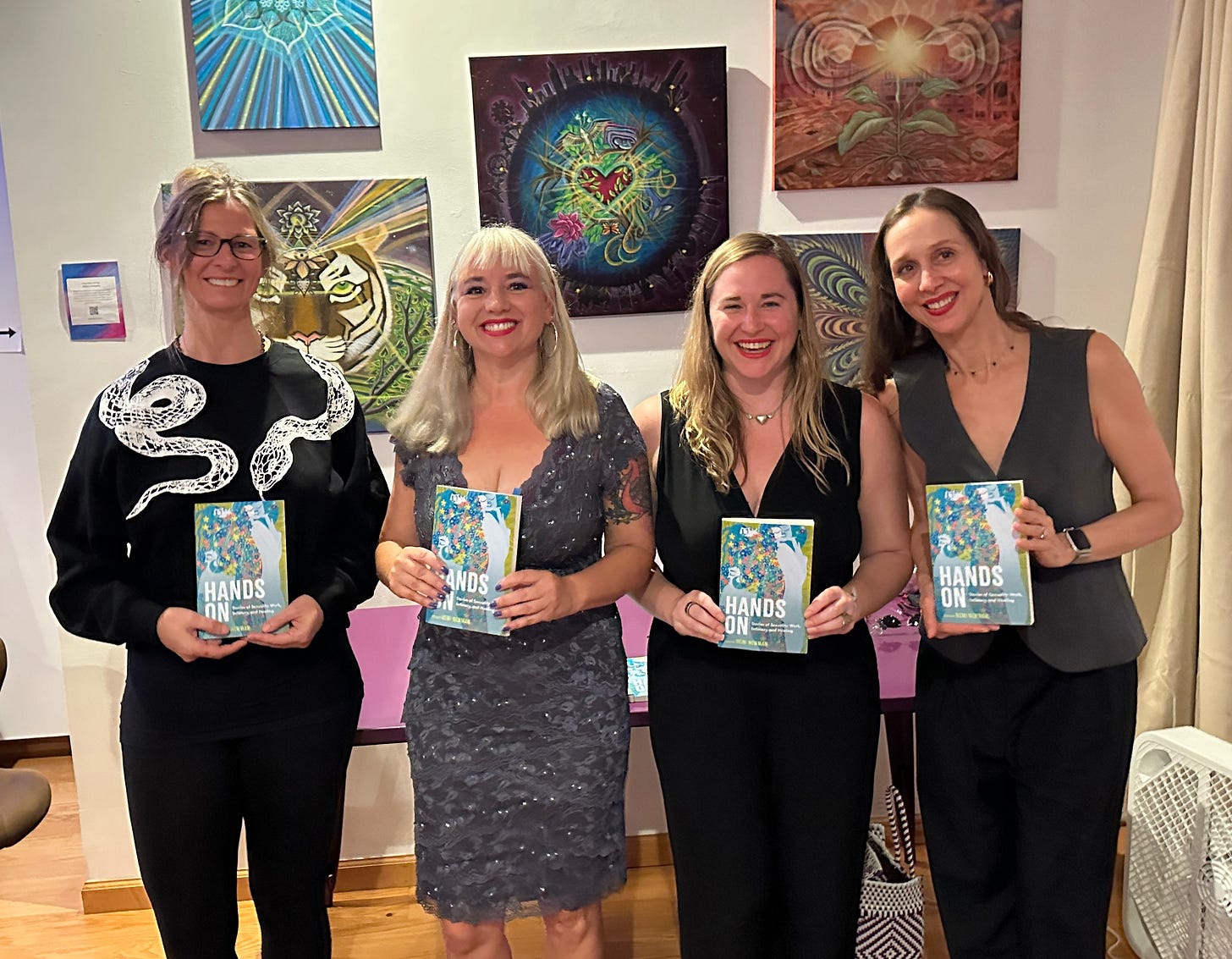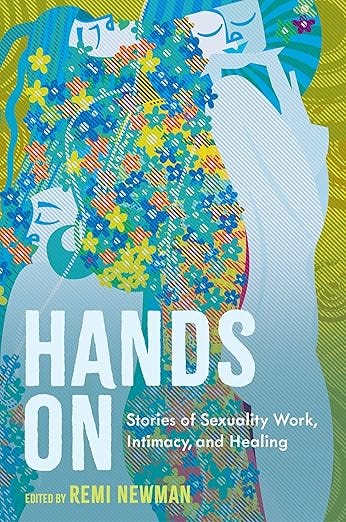
The photo above was taken at a reading I participated in, held in Berkeley, CA, to celebrate the release of Hands On, an anthology edited by sexual health educator Remi Newman. I’m honored to have a story featured in this collection, which explores the healing potential of sexuality work. If you’re interested in purchasing the anthology (which I highly recommend!), you can do so here.
My contribution focuses specifically on the therapeutic possibilities of kink. In my piece, I recount a session with a former client—whom I’ll call Christopher—who had experienced childhood abuse. Our sessions, which involved corporal punishment and genital torture, offered him a way to process his past trauma.
I write:
“Being tortured by me was healing because Christopher felt like he regained power over his past in our sessions. In being the one to request said punishment—and having his limits respected by me when he did—he felt strong again. And, of course, experiencing this torture mixed with erotic release was also freeing.”
I truly believe kink can be healing, and I’m not alone in this view. In recent years, numerous mainstream essays and academic studies have explored the psychological and therapeutic benefits of BDSM and kink. (See here, here, here, here, here, here, here.)
That said, I also acknowledge the limits of my ability to heal a client through a professional kink session. As a pro-Domme, I’ve found that not every client can be helped. Frankly, not all want to be. And so, writing this piece was difficult.
It was challenging to distill a central thesis from the complex reality of sometimes being able to heal a client through kink—and sometimes not.
I write:
“For as many men who are grateful for the safe space I’ve provided to explore this intrinsic part of themselves, other men remained wracked with shame about these urges and unfortunately, have a tendency to project that shame onto me as the provider. For that reason, I’ve had to protect myself from them.”

I go on to describe one client who visited me regularly, yet ultimately ended up making me feel unsafe. He was struggling with his own issues about his kinks and I bore the brunt of that when he lashed out against me. I eventually had to blacklist him.
Today, I rarely meet with clients in person. Nearly all of my sessions are done online. Still, my story in Hands On remains relevant.
For some of my current submissive clients, I continue to offer a space that can be healing. I listen to their fantasies nonjudgmentally and hold space for them to explore their desires.
Take one of my current clients who has a fantasy about being overpowered by a stronger man while I watch. I have built scenarios where he can explore this desire in a healthy way. I feel like a kind of therapist for him (he has no one else to talk to about this kink). But even if I sometimes act like a therapist for some of my clients, some need actual psychological help—help I can’t provide.
Sometimes, I feel like I’m making their problems worse by playing with them.
It’s not my place to yuck anyone’s yum. However, when clients want to engage in self-harm, damaging their bodies irreparably (I’ve witnessed this happen when a client scarred himself with branding irons), abusing drugs (mostly cocaine and crack), putting their livelihoods in jeopardy by playing during work hours in the office, or using kink as a way to avoid deeper emotional honesty, say through “homewrecking” scenes rather than having hard conversations with their wives, it’s hard to believe I’m doing anyone any real good by engaging in these kinks. These are the types of sessions that, these days, I try my best to avoid. I don’t like feeling like I’m a facilitator of self-destruction.
Even something as seemingly harmless as a man wanting to have his penis humiliated for its small size can push the boundaries of what I feel is ethical. If a client has internalized shame about his body and believes the only way he can cope is to eroticize that shame, what am I reinforcing by participating?
Sure, plenty of submissive men seek out Dommes for “small penis humiliation.” Again, I’m not here to yuck anyone’s yum. If this is what a guy likes, he consents to being degraded in this manner, and it’s not hurting anyone, then there’s nothing inherently wrong with it. But if I were an actual therapist, I’d be guiding this type of client toward body acceptance—not helping him eroticize his self-loathing.
This is my perspective. The great thing about Hands On is that there are many perspectives from different sexuality workers of all types and genders. Even at this event, we all had a distinct story to tell. And yet, we all agreed that our work had the power to heal.
Sure, I don’t think my work always heals, but even that’s an important part of the conversation.
I’m curious about what you think. Do you believe kink can heal? Has it healed you? And/or do you agree it can sometimes be carried out in unhealthy ways?





